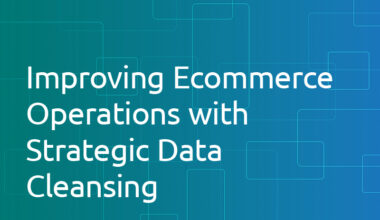In the world of e-commerce, product classification isn’t just a luxury—it’s a necessity. Proper classification ensures that products are easily discoverable, making for a seamless customer experience. However, as inventories grow and product lines diversify, manual classification becomes increasingly untenable. Enter AI and machine learning—technological game changers that are revolutionizing the field of product classification.
- The Need for Automated Product Classification
With an ever-expanding digital marketplace, retailers continually add products to their inventories. Manual product classification:
- Is time-consuming
- Can lead to human errors
- Doesn’t scale well with increasing product numbers
- How AI and Machine Learning Fit In
Machine Learning (ML) is a subset of AI that enables systems to learn and make decisions from data without being explicitly programmed. When applied to product classification:
- Learning from Data: ML algorithms can be trained using large sets of product data. Over time, they become adept at recognizing patterns and making accurate classification decisions.
- Continuous Improvement: As more products are added, the system gets better and more accurate, adapting to changes and nuances in the product lineup.
- Benefits of AI-Driven Product Classification
- Speed: Thousands of products can be classified in a fraction of the time it would take humans.
- Accuracy: By reducing human error, machine learning models can achieve consistent and accurate classification.
- Scalability: As your product range grows, AI can easily adapt without additional resources.
- Real-World Applications
E-commerce giants and startups alike are utilizing AI-driven product classification. For instance, when uploading a new product, an AI system might automatically tag it based on the image and description provided, placing it in the right category without human intervention.
- Overcoming Challenges
While AI offers a multitude of benefits, it’s not without challenges:
- Training Data: High-quality data is essential for training ML models. Ensuring clean and representative data can be a hurdle.
- Adapting to Nuances: While AI is powerful, understanding intricate nuances in certain product categories might initially be challenging.
- Ongoing Training: Like any system, ML models need regular updates and training to adapt to new products and changing taxonomies.
- The Road Ahead: Integration with Other Technologies
The future is bright as AI-driven product classification integrates with other technologies. Augmented Reality (AR) for product visualization, Natural Language Processing (NLP) for enhanced search capabilities, and predictive analytics for inventory management are just a few potential synergies.
Automating product classification with AI and machine learning isn’t just a technological advancement—it’s a paradigm shift. As the e-commerce sector evolves, those who harness this innovation stand to gain a significant competitive edge, offering better user experiences and streamlined operations. As with any technological leap, challenges exist, but the potential rewards for both businesses and their customers are undeniable.
If you’re thinking of leveraging AI and machine learning for automating product classification for your ecommerce business, contact us to find out how our data experts can help guide you.
 1.416.619.5349 Ext.325
1.416.619.5349 Ext.325 







